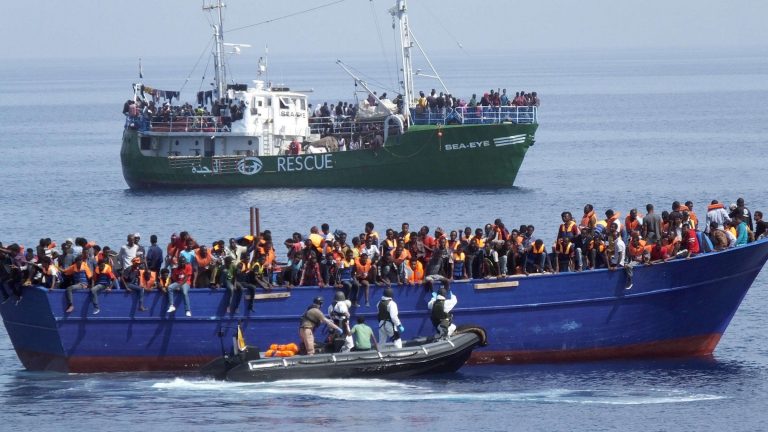
Page description
Follow the desperate journey of migrants seeking refuge,
highlighting their struggles, challenges,
and the human stories behind the migration crisis.
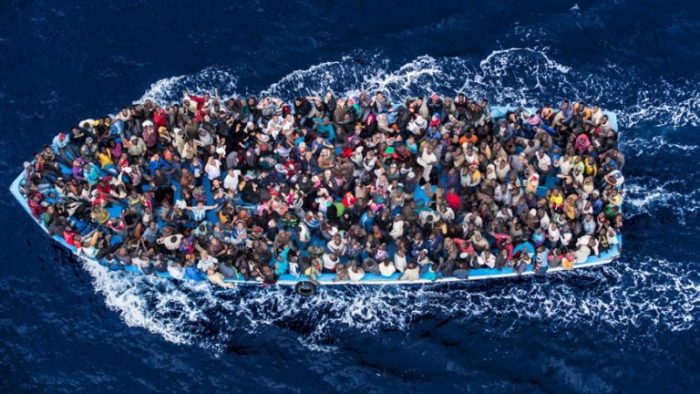

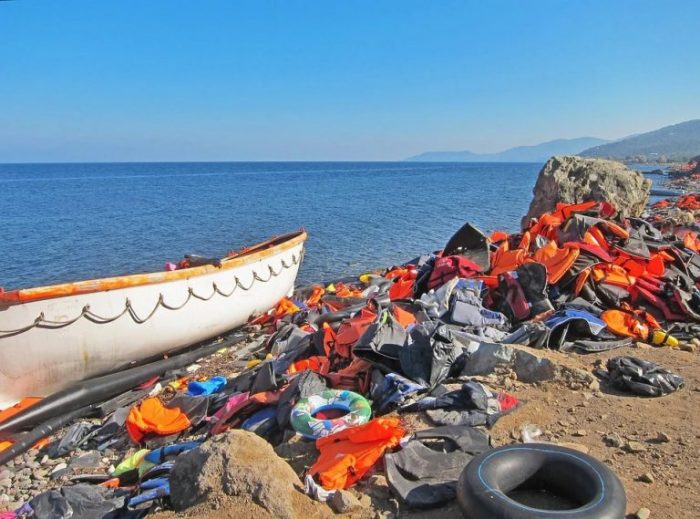
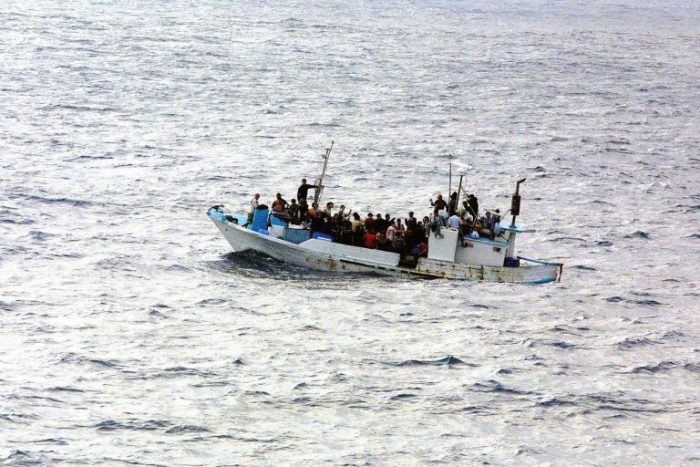
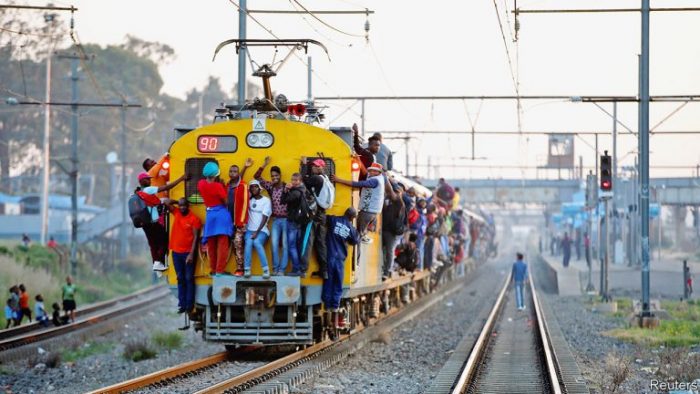
A Path of Suffering and Hope
Across history and borders, countless individuals have embarked on desperate journeys—fleeing war, persecution, poverty, or oppression in search of safety and dignity. These journeys are often marked by unimaginable hardship, resilience, and the sheer will to survive.
This page brings together powerful images, in-depth videos, and insightful texts that capture the reality of those forced to leave everything behind. Through their stories, we explore not only the suffering but also the strength, courage, and hope that define the human spirit in the face of adversity.
📌 Topics Covered:
- The struggles and dangers faced by refugees and migrants
- The global response to forced displacement
- The personal stories behind the statistics
Explore the journey, the pain, and the fight for a future.
Een pad van lijden en hoop
Door de geschiedenis heen en over grenzen heen hebben talloze mensen een wanhopige reis ondernomen—vluchtend voor oorlog, vervolging, armoede of onderdrukking, op zoek naar veiligheid en waardigheid. Deze reizen worden vaak gekenmerkt door onvoorstelbare ontberingen, veerkracht en de pure wil om te overleven.
Deze pagina brengt krachtige beelden, diepgaande video’s en inzichtelijke teksten samen die de realiteit tonen van degenen die alles moesten achterlaten. Door hun verhalen ontdekken we niet alleen het lijden, maar ook de kracht, moed en hoop die de menselijke geest definiëren in tijden van tegenspoed.
📌 Onderwerpen die aan bod komen:
- De gevaren en uitdagingen voor vluchtelingen en migranten
- De wereldwijde reactie op gedwongen ontheemding
- De persoonlijke verhalen achter de statistieken
Ontdek de reis, de pijn en de strijd voor een toekomst.
“The desperate journey” of migrants refers to the perilous and often life-threatening journey undertaken by individuals or groups who are forced to leave their home countries due to various reasons such as conflict, persecution, poverty, or environmental disasters, and who seek refuge or a better life in another country. Here are some key points about the desperate journey of migrants:
Dangerous routes: Migrants often have to travel through dangerous routes, including deserts, mountains, forests, or oceans, in order to reach their destination. These routes may lack basic infrastructure and safety measures, making them treacherous and exposing migrants to various risks such as extreme weather conditions, lack of food and water, and physical harm.
Human trafficking and exploitation: Migrants, especially vulnerable populations such as women, children, and unaccompanied minors, are at risk of falling prey to human traffickers and other exploitative practices. They may be subjected to forced labor, sexual exploitation, or other forms of abuse during their journey or upon reaching their destination.
Legal and administrative challenges: Migrants often face complex legal and administrative challenges, including crossing international borders without proper documentation, navigating immigration policies and procedures, and seeking asylum or refugee status. These challenges can result in detention, deportation, or other legal consequences, adding to the difficulties and uncertainties of their journey.
Lack of basic services: Migrants may face difficulties in accessing basic services such as healthcare, education, shelter, and clean water during their journey. They may also lack access to information, communication, and support networks, further exacerbating their vulnerability and desperation.
Discrimination and xenophobia: Migrants may encounter discrimination, prejudice, and xenophobia from the local population or authorities in the destination country. They may face language barriers, cultural differences, and social exclusion, which can further hinder their integration and well-being.
Mental and physical health risks: The desperate journey of migrants can take a toll on their mental and physical health. Many migrants experience trauma, stress, anxiety, depression, and other mental health challenges due to the hardships and uncertainties they face. They may also suffer from physical injuries, diseases, and malnutrition during their journey.
Family separation: Migrants often face the heartbreaking reality of being separated from their families during their journey. This can result in emotional distress, loss of support systems, and difficulties in reuniting with loved ones.
Lack of legal pathways: Many migrants undertake desperate journeys because they lack safe and legal pathways to migrate to other countries. Limited options for legal migration, such as family reunification or work visas, may push them to resort to irregular or dangerous routes.
Humanitarian response: The desperate journey of migrants also highlights the need for humanitarian response and support from international organizations, governments, and civil society. Access to humanitarian aid, protection, and assistance can make a significant difference in the well-being and safety of migrants during their journey.
Overall, the desperate journey of migrants is a complex and multifaceted phenomenon, characterized by significant risks, challenges, and vulnerabilities. Addressing the root causes of forced migration, providing safe and legal migration pathways, protecting the rights and well-being of migrants, and promoting international cooperation and solidarity are crucial to addressing this global humanitarian issue.
Illegaal, ze gaan door een hel om in Europa te komen wonen
29 jan 2024 LAMPEDUSA
Ze zijn op de vlucht voor armoede, wanhoop en oorlog. Clandestien: Ze dromen van een betere wereld
1 The World’s Most Dangerous Journey?
18 dec. 2016
2 Record number of migrants cross English Channel on a single day – BBC News
3 #MamoudouGassama: Malian migrant is man of the hour
28 mei 2018
4 ‘The worst refugee camp on earth’ – BBC News
Children as young as ten attempting suicide and almost constant horrific violence. This is life inside a European refugee camp. The BBC has been given rare access inside Moria camp on the Greek island of Lesbos. Workers for the charity MSF say it is the worst refugee camp on earth. It has a capacity for around two thousand refugees yet houses around eight thousand. On just one day the BBC visited two people were stabbed. Catrin Nye went inside. Reporter and Producer: Catrin Nye Camera: Owen Kean Research: Leo Sands Picture Editors: Sarah Hosny, Richard Tulip Translations: Najiba Feroz, Vanessa Bowles
The Rising Tide: Europe’s Refugees Wash Ashore in Greece
8 okt. 2015
5 Europe’s Migration Tragedy: Life and death in the Mediterranean
6 Escape to Europe: The migrants’ story – BBC Newsnight
19 jun. 2015
IMPORTANT CONTENT
7 Rescued African migrants say they are fleeing slavery
28 jun. 2017
8 Syrian Refugee Crisis – The hardest part of their journey to Europe.
18 okt. 2015
9 Surviving One of the Deadliest Routes to Europe: Refugees at Sea
11 mrt. 2016
10 Saved at Sea : Rescuing Migrants in the Mediterranean – the fifth estate
29 okt. 2016
11 Desperate Journey: Europe’s Refugee Crisis
17 nov. 2015
IMPORTANT CONTENT
12 Refugee crisis: Hundreds in stand-off with police in Hungary after refusing to go to migrant camp
13 Italy’s Mediterranean Mass Grave: Europe or Die
16 feb. 2015
14 The tiny Greek island sinking under Europe’s migrant crisis
18 aug. 2015
15 The Ethiopian migrants who make the desperate journey to Saudi Arabia via Yemen
14 feb. 2020
10 apr. 2018
17 Migrant Kids In Crisis In Greece | Stacey Dooley Investigates
18 Life As An Illegal Immigrant in Greece
16 apr. 2014
Greece has always been a gateway for immigrants searching for what they assumed would be a better life in Europe. But many of those who’ve crossed illegally into Greece have found that they have traded one bad situation for another. Refugees from war-torn countries like Syria and Afghanistan are finding themselves stuck in a country that is not only battling an economic crisis but is witnessing a rise in anti-immigrant violence, exemplified by the a nationalist political party known as the Golden Dawn.
VICE News’ Alex Miller travelled from Athens to the western port of Patras to find out what it is like to be trapped in a country you never wanted to be in in the first place.
IMPORTANT CONTENT
19 Refugees stranded in Greece | DW Documentary
11 mei 2019
The refugee camps in Greece are hopelessly overcrowded. Many refugees are sick and traumatized and government agencies overtaxed. The situation is particularly difficult for unaccompanied minors. The number of suicides is increasing.
A lack of hygiene, violence, sexual harassment, no prospects: these are the conditions under which three times as many refugees as originally planned live in the camp on Samos. And, even though the Balkan route is closed, new refugees are still coming every day. They cannot leave the island. The number of suicides is rising. The UNHCR says asylum applications should be examined more quickly and unaccompanied, underage refugees taken to the mainland to rejoin their families as soon as possible. Aid workers say they have never experienced conditions like the ones in the Greek refugee camps during their previous missions around the world. Only private aid organizations can bring hope. Some young people manage to escape to Athens. They hope to be able to leave Greece more easily from there. But many of them remain stuck in the city, begging – and in some cases, even resorting to prostitution to get by.
_______
DW Documentary gives you knowledge beyond the headlines. Watch high-class documentaries from German broadcasters and international production companies. Meet intriguing people, travel to distant lands, get a look behind the complexities of daily life and build a deeper understanding of current affairs and global events. Subscribe and explore the world around you with DW Documentary.
20 The Harrowing Personal Stories of Syrian Refugees, in Their Own Words
3 okt. 2017
21 Syrian Refugee Children Speak Out | UNICEF
4 feb. 2013
22 Children Fleeing Syria Are Dying In Lebanon’s Refugee Camps
23 aug. 2017
23 This Is Home: Children Document Life in Largest Syrian Refugee Camp
24 Syrian Refugee Camps Becoming Established Cities
23 jun. 2014
Home away from home: The tragic story of the Jordan/Syria border crisis.
For downloads and more information visit:
http://www.journeyman.tv/?lid=67308&b…
The civil war in Syria has created the world’s worst refugee crisis in twenty years. 2.8 million people have fled their homeland to live in foreign camps, such as the UNHCR camp in northern Jordan.
“I always heard the word refugee but I never imagined I would be one”, says Samar Hariri, a grieving school teacher and mother of five. Samar, her husband and their children are just a handful of the 100,000 displaced Syrians who flocked to Camp Zaatari – just a few kilometres from the border with Syria – and who now call it home. Two years ago, collections of tents sat incongruously in the middle of this barren desert. Now a refugee city with a distinctive heart and soul of its own, a community of resilient, hopeful people looks set to grow ever more established. “You ask yourself, why is this happening to me? A person who always had dignity now has none”. Once a prosperous, middle class family man, Abu Diaa now focuses on transforming their camp into something resembling home: an essential coping mechanism for enduring life in a refugee camp. It is an impulse Kilian Kleinschmidt, head of Zaatari Camp, understands: “When you lose everything… your home, your belongings, you have lost your identity. Everything has gone.” In this deeply moving report we witness the stoicism of a family rebuilding themselves among thousands of others.
ABC Australia – Ref 6158
Journeyman Pictures is your independent source for the world’s most powerful films, exploring the burning issues of today. We represent stories from the world’s top producers, with brand new content coming in all the time. On our channel you’ll find outstanding and controversial journalism covering any global subject you can imagine wanting to know about.
18 jun. 2016
26 The dangerous boat ride to Greece through the eyes of a Syrian refugee girl | UNICEF
5 nov. 2015
27 Syrian Refugees in Kurdistan | Faith Matters
7 apr. 2014
28 Syrian Children – Refugee Camp Niroz | UNICEF
21 aug. 2013
Syrian Children in Refugee Camps.
Produced by Jezza Neumann for Your Worldview, a global online platform showcasing short films from around the world.
For its new “HOME” season, Neumann produced several short films about Syrian children in the Domiz refugee camp in Kurdistan, Iraq.
This segment of Kids in Camps features a 10-year-old girl named Neeroz.
The official UNICEF YouTube channel is your primary destination for the latest news updates from the frontline, documentaries, celebrity appeals, and more about our work to get the rights of every child realized.
29 Lebanon: A tiny computer lets Syrian refugees learn | UNICEF
20 nov. 2014
More than three years into the Syrian crisis, many of the 3 million displaced children haven’t returned to school. But UNICEF innovation specialist James Cranwell-Ward saw a solution in a small low-cost technology – a computer hard drive the size of a credit card called the Raspberry Pi.
To read more stories on The State of the World’s Children, visit: http://www.sowc2015.unicef.org.
The official UNICEF YouTube channel is your primary destination for the latest news updates from the frontline, documentaries, celebrity appeals, and more about our work to realize the rights of every child.
30 Syrian Children in Lebanon- Return to Learning | UNICEF
10 jan. 2014
31 Rohingya Refugee Life: Through a child’s eyes
Refugee Life: Through a Child’s Eyes
12 jul. 2016
32 Hiba’s Story: Ten-Year-Old Syrian Refugee | UNICEF USA
29 nov. 2016
33 We Walk Together: a Syrian refugee family’s journey to the heart of Europe
10 sep. 2015
29 dec. 2015
35 Syria’s women refugees fear sham marriages and rape
28 mrt. 2013
SHOCKING CONTENT
36 Syrian Refugee Children – Struggle in Lebanon Winter | UNICEF
37 Syria: No strings l Witness
18 aug. 2014
38 The extraordinary friendships formed by Syrians fleeing the frontlines | Inside Idlib
19 mrt. 2015
39 Syrian refugees in Turkey suffer harsh living conditions
More than 2 million refugees and migrants that crossed into Europe last year, fleeing Syria’s civil war, currently live in Turkey. Nearly 90 percent of those refugees are now living outside of traditional refugee camps, presenting a whole new set of challenges for international relief agencies. NewsHour Special Correspondent Mike Cerre reports.
40 Mediterranean mission – Civil sea rescue of refugees | DW Documentary
28 aug 2023 #dwdocumentary #documentary
Rescue mission on the Mediterranean: Every year, thousands of people fleeing violence and hunger leave their homelands, only to perish in the Mediterranean. The crew of the rescue ship ‘Humanity 1’ is saving as many as they can.
In 2022 some 160 thousand refugees and migrants crossed the Mediterranean Sea to Europe. A further 2,439 are listed as dead or missing, although the real figure is likely higher. This year too, a similar number are making their way northward in search of a better life. The German rescue ship ‘Humanity 1’ and its international crew ply the Mediterranean to rescue drowning refugees. Again and again they encounter dangerously overloaded boats on the verge of sinking. During rescues, every movement must be precise, so intensive training is vital. DW reporter Anupam Deb Kanunjna was aboard the ‘Humanity 1’ for two weeks and observed the crew during drills and rescue operations.
#documentary #dwdocumentary
______
DW Documentary gives you knowledge beyond the headlines. Watch top documentaries from German broadcasters and international production companies. Meet intriguing people, travel to distant lands, get a look behind the complexities of daily life and build a deeper understanding of current affairs and global events. Subscribe and explore the world around you with DW Documentary.
Images of the refugee crisis | DW Documentary
4 sep. 2020
Images from the refugee crisis in 2015 are etched in our collective memory. A dead child on the beach. A Syrian who talks the German chancellor into joining in a selfie. A frightened boy being torn from a bus surrounded by a raging mob.
These snapshots represent dramatic moments from the time when nearly a million refugees entered Germany in the summer of 2015. In this documentary, the authors Bamdad Esmaili and Matthias Fuchs go in search of the stories behind the pictures. What really happened back then? Where are the people who were in them now? And how did their lives unfold after the summer when German Chancellor Angela Merkel appeared in front of the television cameras to say, “We’ll manage this”?
Anas Modamani lives and studies in Berlin. In 2015, he photographed himself and the Chancellor together. “Through that ‘selfie.’ I found friends and learned the language,” he says. But the image didn’t just bring him good fortune. His likeness went viral and he was labelled a terrorist. Modamani took Facebook to court. The filmmakers also encounter volunteers from Munich’s main train station who handed out teddy bears back then. And they meet perfectly integrated refugees who love Bavarian food as well as others who have barely learned German even after five years. Again and again, Esmaili and Fuchs ask, “‘We’ll manage it.’ But did we really?” They also speak with the father and aunt of two-year-old Alan Kurdi, who drowned near the Turkish town of Bodrum.
Five years after the refugee crisis, it seems the world has changed yet somehow still remains the same. The situation on the border between Turkey and Greece has not eased and Europe still doesn’t have any workable solutions to the problem of how to process and distribute new refugees. Even now, in 2020, thousands of people are still hoping to make their way to Europe.
——————————————————————-
DW Documentary gives you knowledge beyond the headlines. Watch high-class documentaries from German broadcasters and international production companies. Meet intriguing people, travel to distant lands, get a look behind the complexities of daily life and build a deeper understanding of current affairs and global events. Subscribe and explore the world around you with DW Documentary.
IMPORTANT CONTENT
41 Terror at the Moria refugee camp | DW Documentary
1 okt 2018
A group of ISIS followers are said to be terrorizing people in the Moria refugee camp on the Greek island of Lesbos. On the pretext of religious propriety, they brutally punish whoever they deem criminal. Two DW reporters investigate the rumors.
Moria Camp on Lesbos is considered Europe’s worst refugee camp. More than 8000 people live here, crowded together in an extremely confined space. The only thing that seems to work is crime: drugs, prostitution and violence. Recently more and more refugees from Deir ez-Zor, one of the last strongholds of Islamic State in Syria, have been arriving in the camp. Since then it seems that crime in the camp has taken on a new quality. A group of Syrians is said to be controlling most of the illegal activities. Anyone who doesn’t toe the line or is in the way can expect physical violence or even death threats. The perpetrators often cite Sharia law as their justification. More and more graffiti glorify IS. The Greek authorities take no action. Has IS successfully infiltrated Moria refugee camp? If so, what does that say about the way this terrorist network functions? And is organized crime increasingly positioning itself under the aegis of Islamic State? Bachir Amroune and Mariel Müller investigate.
_______
DW Documentary gives you knowledge beyond the headlines. Watch high-class documentaries from German broadcasters and international production companies. Meet intriguing people, travel to distant lands, get a look behind the complexities of daily life and build a deeper understanding of current affairs and global events. Subscribe and explore the world around you with DW Documentary.
Moria – the EU’s failed refugee policy | DW Documentary
31 jan. 2021
The Moria refugee camp on the Greek island of Lesbos has become a symbol of the failure of EU Policy. Dramatic images of a fire at the camp in September 2020 have put pressure on the EU Commission to draft a new refugee agreement.
The flaws of EU refugee policy have been known for years: asylum applications take far too long to process, only some member states accept approved refugees, and many asylum seekers who’ve been turned down can’t be sent back to their countries of origin. But who is actually responsible for the situation in Moria? Is it the EU, or individual member states that refuse to compromise? And what are the chances of finding a solution, after years of deadlock?
The makers of this documentary tracked the lives of refugees on Lesbos for a year. Living conditions in the Moria camp have long been unacceptable. Some German cities, including Bielefeld, offered help immediately after the fire. Should the camp take in new refugees? The film features interviews with supporters and critics of this policy, and with former refugees who lived at the camp.
The reporters also talked to EU officials, and politicians and experts from various countries to try to find out why this situation has dragged on for so long. They also discuss proposals for a more equitable distribution of future refugees among EU member states. For years, those countries have insisted that asylum applications be examined at their borders. That concept quite obviously failed in Moria.
——————————————————————-
DW Documentary gives you knowledge beyond the headlines. Watch top documentaries from German broadcasters and international production companies. Meet intriguing people, travel to distant lands, get a look behind the complexities of daily life and build a deeper understanding of current affairs and global events. Subscribe and explore the world around you with DW Documentary.
IMPORTANT CONTENT
42 When Europe turns a blind eye: Life and death in the Mediterranean • FRANCE 24 English
43 Libya’s Descent Into Immigration Chaos (2014)
44 Border Force Try to Stop a Potential Sex Trafficking Situation | Heathrow: Britain’s Busiest Airport
45 Inside The Worlds Deadliest Migrant Route
29 jan 2021
We join the ‘Open Arms’ crew as they embark on the most dangerous migrant route in the world — and one of their deadliest missions to date.
An estimated 19,000 people have been reported dead or missing in the Mediterranean Sea since 2014 as they attempt the treacherous boat journey from Libya to Europe, fleeing war, persecution and poverty.
Since its foundation in 2015, Spanish NGO Open Arms has rescued over 60,000 refugees. But nothing prepared it for the events that unfolded on November 11, 2020.
Director: Jean-Marc Joseph
Editor: Guillem Comas
Music & Sound Editor: James Hall
Hungarian Translation: Attila Piróth
Brazilian Portuguese Translation: Mariana Braga
German Translation: Janina Gilch
46 Live Frogs For Dinner
23 jun. 2012